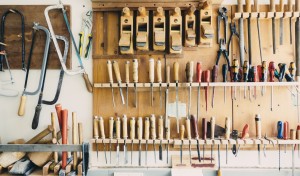This is part two of our two-part blog series on the facts and myths surrounding buying fixer-uppers.
- MYTH #4: Once I fix this house up, I can turn around and sell it for double the price I paid. FACT #4: A home will only sell for what the market can bare. What this means is that no matter how many upgrades were made, or how much money has been invested in the upgrades, a home will only sell for what the majority of homebuyers are willing to pay. Factors to consider when calculating your possible return on investment:
- Location: What kind of a neighborhood is the home in? The type of neighborhood will determine which type of buyers you will attract when you decide to sell. For example: An area consisting of mostly “first time buyers” will attract buyers who have a strict and limited budget. They are looking for affordability above all else – including high-end finishes and perfectly landscaped gardens.
- Neighbors: What are the neighboring homes like? A beautiful home surrounded by unkempt, run-down homes will sell for much less, than a beautiful home surrounded by well kept, nicely maintained homes.
- Surroundings: What are the surrounding features? Buyers are willing to pay more for a home that is in a convenient, yet quiet locale. While you may find it convenient to side onto a school, many potential buyers would eliminate such a location due to the noise level associated with the presence of hundreds of excitable children, and the congestion caused by school buses and parents dropping off and picking up students.
- MYTH #5: I can make a lot more money by turning this single family home into a multi-family dwelling. FACT #5: While this statement is for the most part true, it may not be possible. Most towns and cities have strict zoning laws that not only dictate the maximum allowable occupancy within any given area, but also dictate the size and design of a home when building new, or creating additions to an existing structure. Once you have thoroughly investigated the pro’s and con’s associated with purchasing a fixer upper home, and you have decided that it’s right for you, be sure to “run your numbers”.
- List Price of Fixer Upper
- Average Recent Sale Prices of Similar “Non Fixer Upper” Area Homes
- Estimated Cost of Repairs from Reputable Source (e.g. referred Renovation Company)
- Buffer Amount for “Unexpected” Repair Costs (usually 1/2 of estimated total)
- Selling Expenses (real estate fees, lawyer fees, closing costs)
- Amount of Profit You Desire versus Amount of Actual Profit
- For example:
- $200,000.00 = List Price of Fixer Upper
- $255,000.00 = Average Sales Price
- $ 25,000.00 = Estimated Repairs
- $ 12,500.00 = Buffer for Repairs
- $ 17,000.00 = Selling Expenses
- $ 20,000.00 = Desired Profit Versus Actual
- Profit of $500.00
- If your intent was to purchase the house shown in the example above, make the repairs, and immediately list the house for sale, your Actual Profit shown is only $500.00. If, however, your intent was to purchase the same house, but actually live in it for a few years before selling, you would normally expect to turn a much better profit for two reasons:
- First, historically speaking, the real estate market normally goes up over time and your anticipated sale price would be higher – affording you more profit.
- Second, the money that you would have been paying in rent to live elsewhere – with no return – is actively paying down your mortgage and increasing your equity.
As with all investments, though, nothing is guaranteed. So when looking to finance a home, keep in mind that the real estate market has taken some big hits in the past. Never overextend yourself financially.
Please note that the figures in the calculations shown were used for example purposes only. Local housing prices, repair costs, and selling costs will vary greatly from one location to another. It is recommended that all Buyers thoroughly research their local costs and legal restrictions before purchasing.




